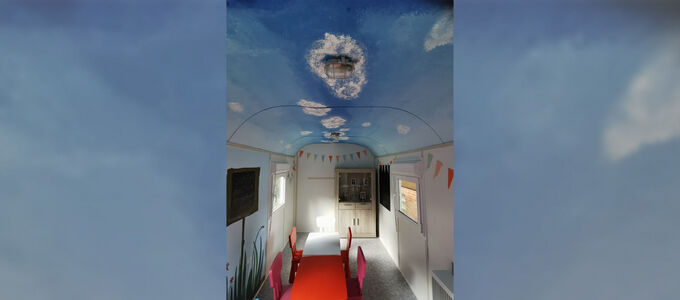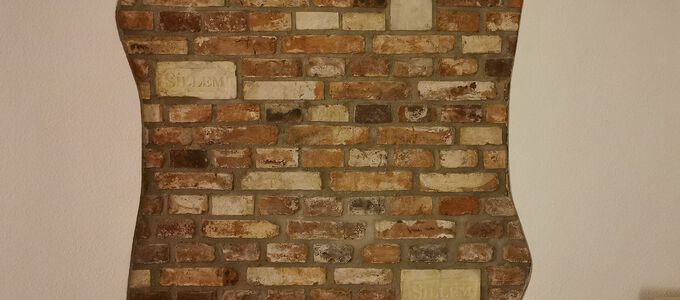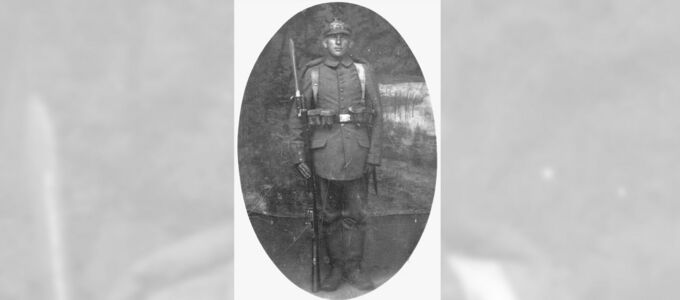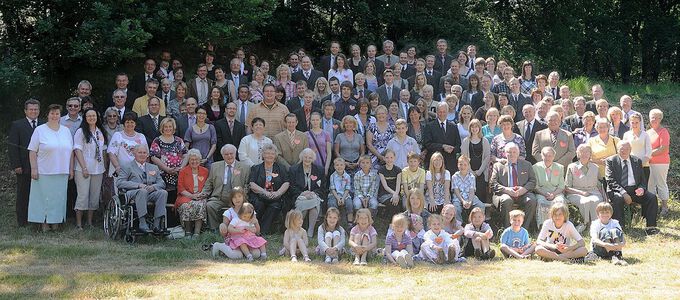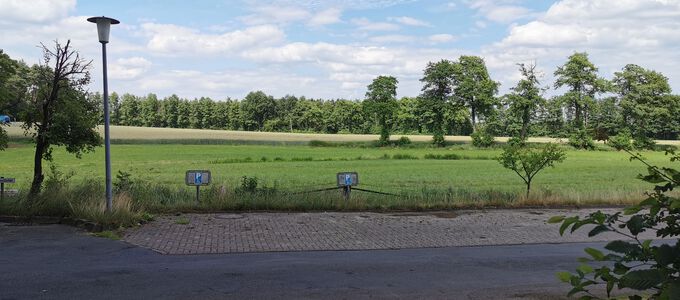
The bricks travelled 40 kilometres from Hamburg-Borgfelde to Doosthof. These were the first bricks that were owned by the New Apostolic Church. Almost 80 years later, these historic bricks still adorn a church building.
Doosthof is actually nothing more than a single road between the towns of Bargstedt and Ahlerstedt in northern Germany. A road, some family homes on either side, a church—amidst forests and fields. “This is the sticks. There is nothing here. Yet, a congregation developed,” the current rector, Detlef Oehlers, reports.
Insane or faith-filled?
The New Apostolic congregation Doosthof had its beginnings in the First World War. A farmer by the name of Claus Bargsten was conscripted and sent to the front. Before long, his wife, Anna, received letters in which he told her that he had found a Saviour and that he had contact with Apostles. She feared that he had gone insane because Claus was not the church-going kind of guy. But soon she learned that her husband was as full of life as ever and had become acquainted with the New Apostolic Church through his trench buddy and fellow soldier, Priest Wilhelm Krause.
After the war, Claus Bargsten convinced more and more people in Doosthof and the surrounding area of his faith so that a congregation was founded on 12 August 1922. A few months later, in January 1923, Priest Gustav Engel became the first rector of the Doosthof congregation.
Brick by brick
That same month, the Bargsten’s home burned down. When Claus and Anna rebuilt, they decided to set up a gathering place in their new house that was big enough to hold a hundred people. By 1946, however, the premises in Claus Bargsten’s home—who had died in the meantime—had become too small for the growing congregation. It was a time for a bigger church. A forested plot was bought, and the members felled the trees and prepared the wood for the roof structure.
The bricks for the new building came from the city of Hamburg. Week after week, the young people from Doosthof travelled to the city to dig up and clean the bricks from the Hamburg-Borgfelde church, which had been completely destroyed in the Second World War. The Borgfelde church had been bought by Apostle Friedrich Wachmann and was the first own church building of the New Apostolic Church then, which at that time was still called the Apostolische Gemeinschaft (“Apostolic Community”). Known as Roggenbrod Chapel, the church had been destroyed by bombs during the Second World War. But its bricks were to be given a new life.
In exchange for oats, horse-drawn carts took the bricks to a goods station, where the young people loaded them onto the wagons. In Bargstedt, three kilometres from Doosthof, they unloaded the stones again and carted them to the building site with a farm tractor. With the more than 100,000 bricks they had collected like this, the members built a church. A nearby sawmill allowed them to process the wood free of charge.
Everyone contributed their skills, and little by little a church building came into being. District Apostle Karl Weinmann dedicated the church in Doosthof on 9 October 1949. He developed a very special relationship to the Doosthof church: he liked to use the flat in the church annex as his weekend home and affectionately called it “Karl’s rest”.
Between tradition and modernity
Several renovations later, the church now offers more space, modern furniture, and the technical facilities to watch video broadcasts of divine services. During the last renovation in 2021, a new multi-purpose room with an exposed brickface was created—something the members are very proud of. They also organised a construction-site trailer for the children of the congregation. “That’s how the Doosthofers are. Everyone pitches in,” explains the rector.
The warm-hearted congregation is very active: there are several choirs and instrumental ensembles, and lots of outings and get-togethers. The congregation loves nothing more than to get together with people from all over the world. They have contacts to Norway, for example. Even the late Apostle Tan Bian Sing from Indonesia was in Doosthof once. He conducted a service there in 1958.
This year the congregation marks its one hundredth anniversary. The congregation has already made a video and sent it to the Chief Apostle, hoping that he will agree and celebrate the centenary service in Doosthof.










